The 19th Century Uproar in Fort Greene: Successful Black Hotelier Hiram S. Thomas Buys a Home
One neighbor got the block agitated and media coverage ensued.

Photo by Susan De Vries
Editor’s note: This story is an update of one that ran in 2010. Read the original here.
Fort Greene Place, between Hanson Place and Lafayette Avenue, is a quiet block, somewhat isolated from the busier hubbub of the nearby Fulton Street commercial corridor. Its handsome brownstone row houses were built as speculative housing in the 1850s for the large number of middle class buyers who were pouring into Brooklyn right before the Civil War. At the time, Fort Greene was one of the fastest growing Brooklyn neighborhoods, as development spread south and east from Brooklyn’s economic and residential heart, the Brooklyn Heights/Fulton Ferry and waterfront areas.
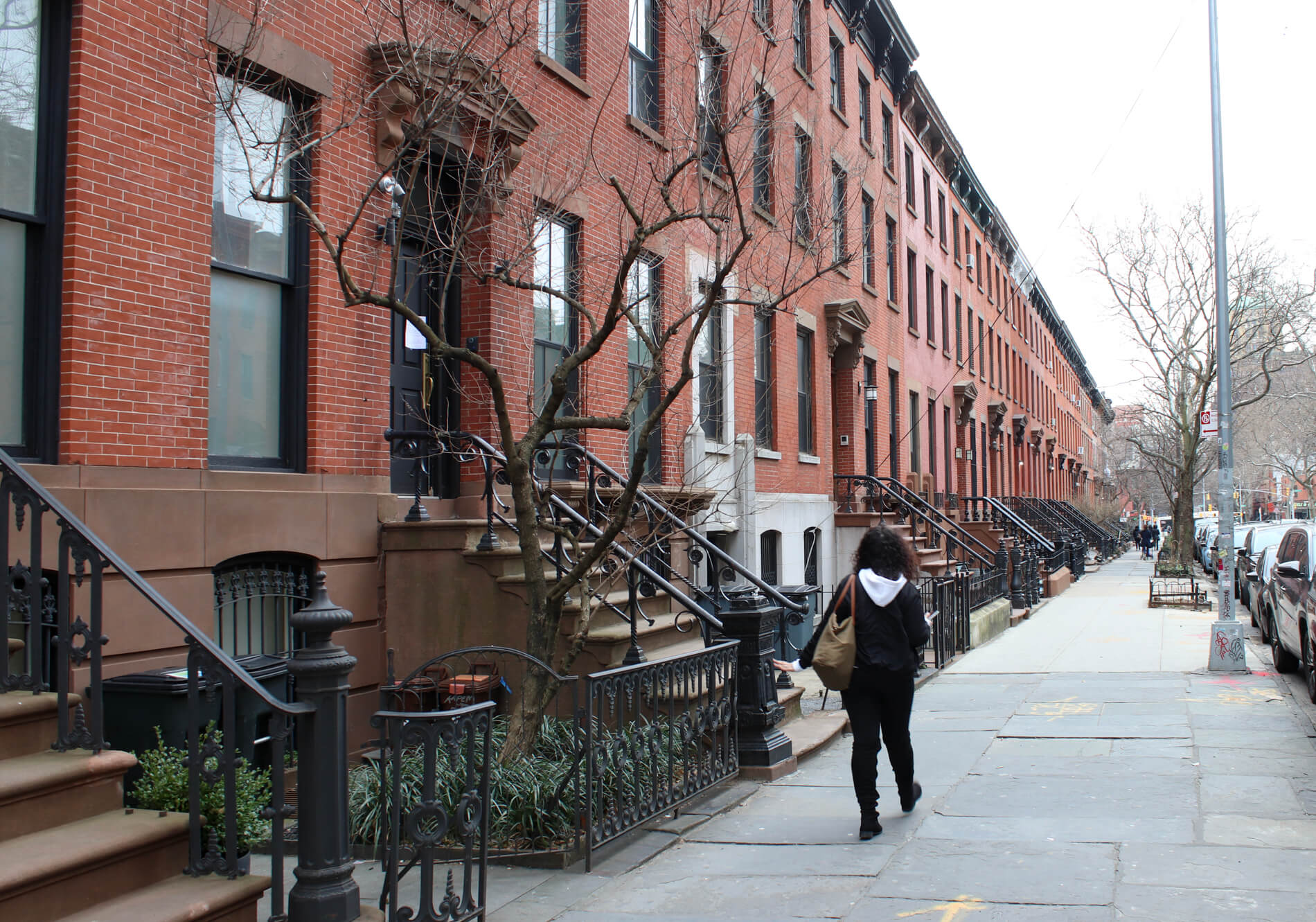
By the 1890s, the hot areas of town had shifted to Clinton Hill, Bedford and Park Slope, and Fort Greene Place was settling down in comfortable, if unremarkable, solid middle class bliss. Until the unthinkable happened in 1894, when a house sale catapulted Fort Greene Place onto the front page of the Brooklyn Eagle and in the New York Times. It was a time to call the neighborhood to action, hold meetings and mobilize, because Hiram S. Thomas, the new owner of 131 Fort Greene Place, was a Negro.
Brooklyn has always had black people in sizable numbers. From the slaves on Dutch farms to the freedmen who established businesses throughout the city, to the thousands who lived and worked all over Brooklyn with a range of incomes and levels of opportunity, by the late 1800s, there was already a 200-year-old history of black life in Brooklyn.
By any definition, Hiram S. Thomas was an unqualified success. He had been born a free man in Drummondville, Ontario, in 1837. He was a college graduate, and during the Ulysses S. Grant administration, in the 1870s, he was the steward of the Capitol Club, in Washington, D.C. By the 1880s, he had relocated to the popular and prosperous town of Saratoga Springs, one of the posh resort towns in the Adirondack Mountains, a favorite vacation destination of the rich and well-connected of New York City during the Gilded Age. Thomas began as the head waiter at the exclusive Grand Union Hotel, the Waldorf of Saratoga Springs. There he did quite well, and in 1888 he took over another well known hotel and restaurant on Saratoga Lake called Moon’s, and renamed it the Lake House. According to local records, the Saratoga Springs hotel belonged to a New York City owner, but the popular restaurant was all his.
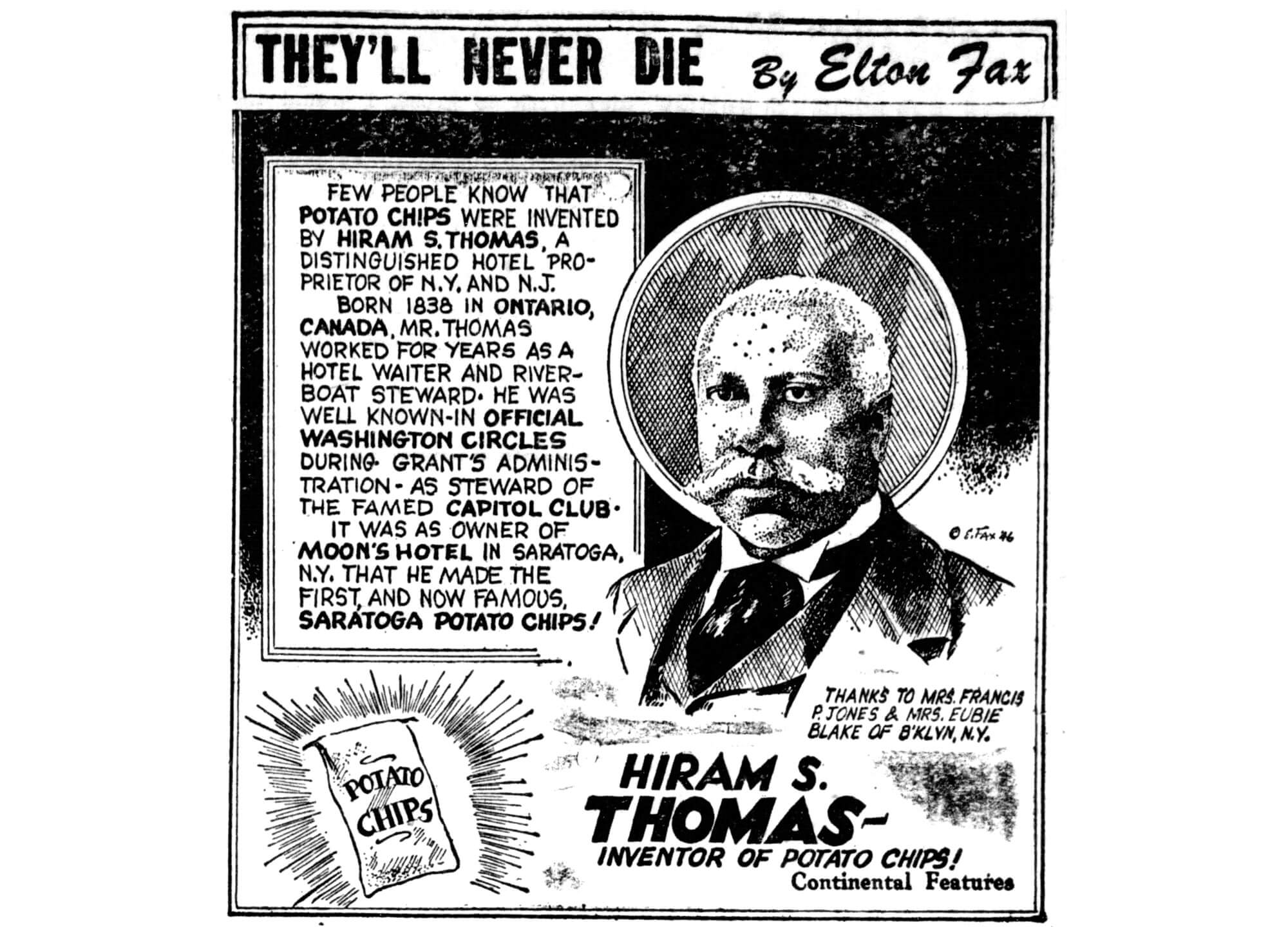
The Lake House catered to a high end clientele, hosting parties, special events, as well as daily meals, and Thomas’ ownership of this venue was a coup for anyone. The Lake House was often in the society columns of the New York Times with Hiram Walker’s name as proprietor. The fact that it belonged to a black man who was respected by his customers was extraordinary for its time. The Lake House is also claimed to be the home to one of America’s national treasures, the Saratoga chip, or as we know it now the potato chip. Local legend has it that it was invented by the African-American chef when the hotel was still called Moon’s, who responded to a customer’s complaint that his thick fried potatoes were too thick. The chef, George Crum, cut them thinner twice, they were still returned, and in frustration, cut them paper thin, fried them again and over-salted them before sending them out. They were a hit, and were soon ordered by everyone at every meal, and a classic was born. Whether true or not, the potato chip was certainly popularized in Saratoga Springs.
But I digress. Saratoga Springs was a seasonal town, so in the winter, Hiram Thomas was busy as the head waiter at the Lakewood Hotel, in Lakewood, N.J. In 1892, a New York Times writer vacationing there wrote, “Who should be the headwater, but the dignified and portly Hiram Thomas, from the Grand Union Hotel in Saratoga Springs, who has ‘head-waitered’ upon me many times in that establishment; and Mr. Thomas stood by me while I ate the Lakewood’s Little Neck clams…..It is no small honor, you must understand, to have the dignified head waiter in a big hotel devote his time to you and even stop to talk with you. But I wore my laurels as modestly as I could.”
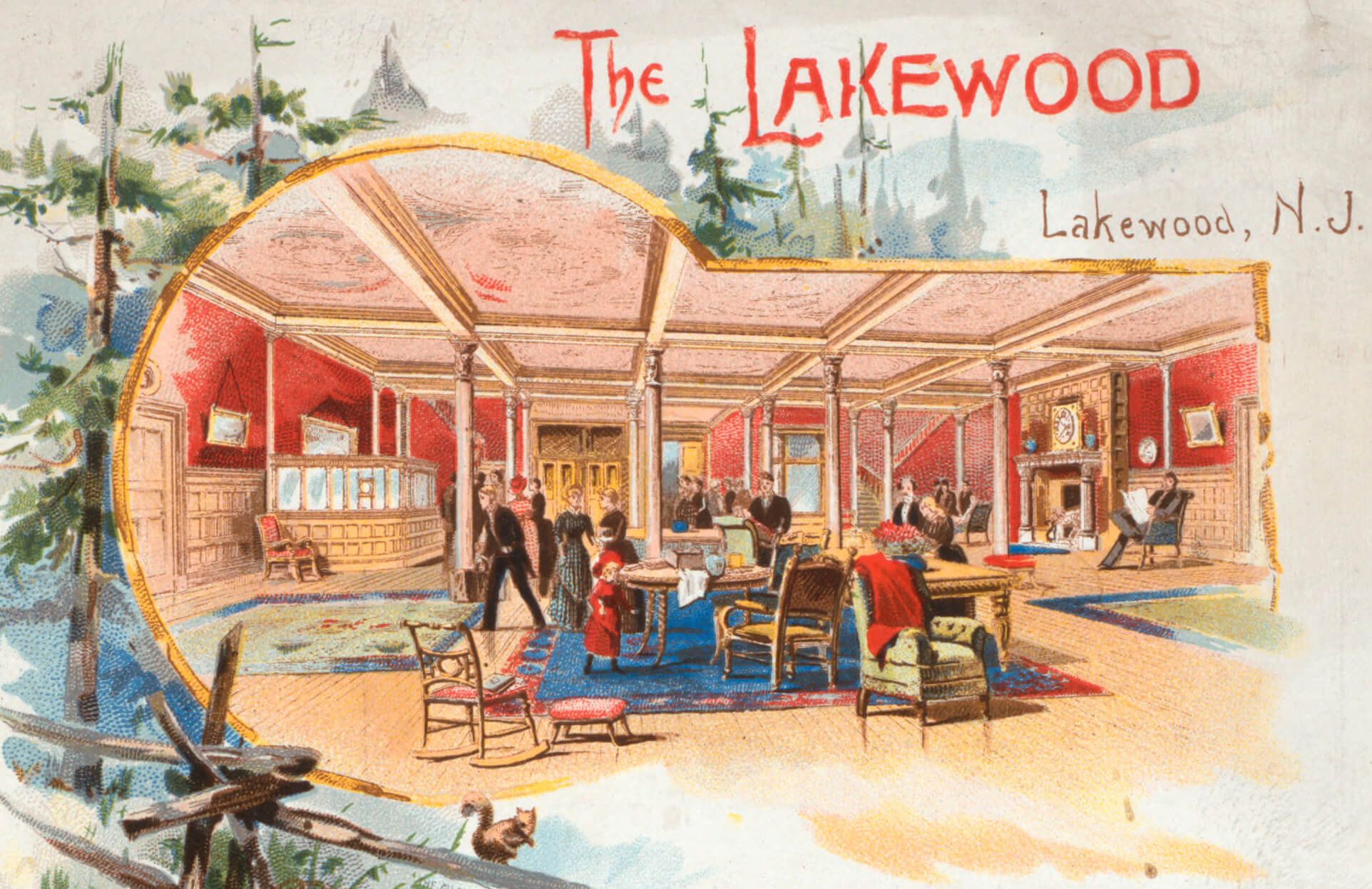
Obviously, Mr. Thomas was a well respected man, and quite chatty. In 1894, while talking with guests at his Lake House restaurant in Saratoga Springs, Hiram Thomas ran into General Edward Molineaux, once a member of General Grant’s staff, and a customer from Thomas’ days in D.C. Upon hearing that the general was from Brooklyn, Thomas asked him about a property that he had just contracted to buy, on a little street called Fort Greene Place. To his great surprise, General Molineaux lived on that very block, down the street at No. 117. What a coincidence! Well, the General told his sister, who told her husband, who told his landlady, Doctor Emma Onderdock. She owned several buildings in the neighborhood and on that block, including the house next door to Mr. Thomas’ new building.
The good doctor, who had the distinction of being one of Brooklyn’s first female doctors, was the main instigator of the furor that followed. She immediately tried to sue the seller, a Dr. Harry Smith, who had moved to Prospect Heights, and really didn’t care who bought it. He had put the house in the hands of an agent named Thomas J. Henderson, who sold the house to Mr. Walker. Dr. Onderdock got the neighbors all agitated at the thought of a Negro buying a house on their block, and a series of meetings and strategy sessions, as well as media coverage, ensued. The headline in the Eagle on October 1, 1894 read, “Flurry in Ft. Greene Place, Because a Negro Has Bought a Three Story House: Aristocratic Neighbors in a Panic.” The New York Times headline read, “They Want No Colored Neighbor.”
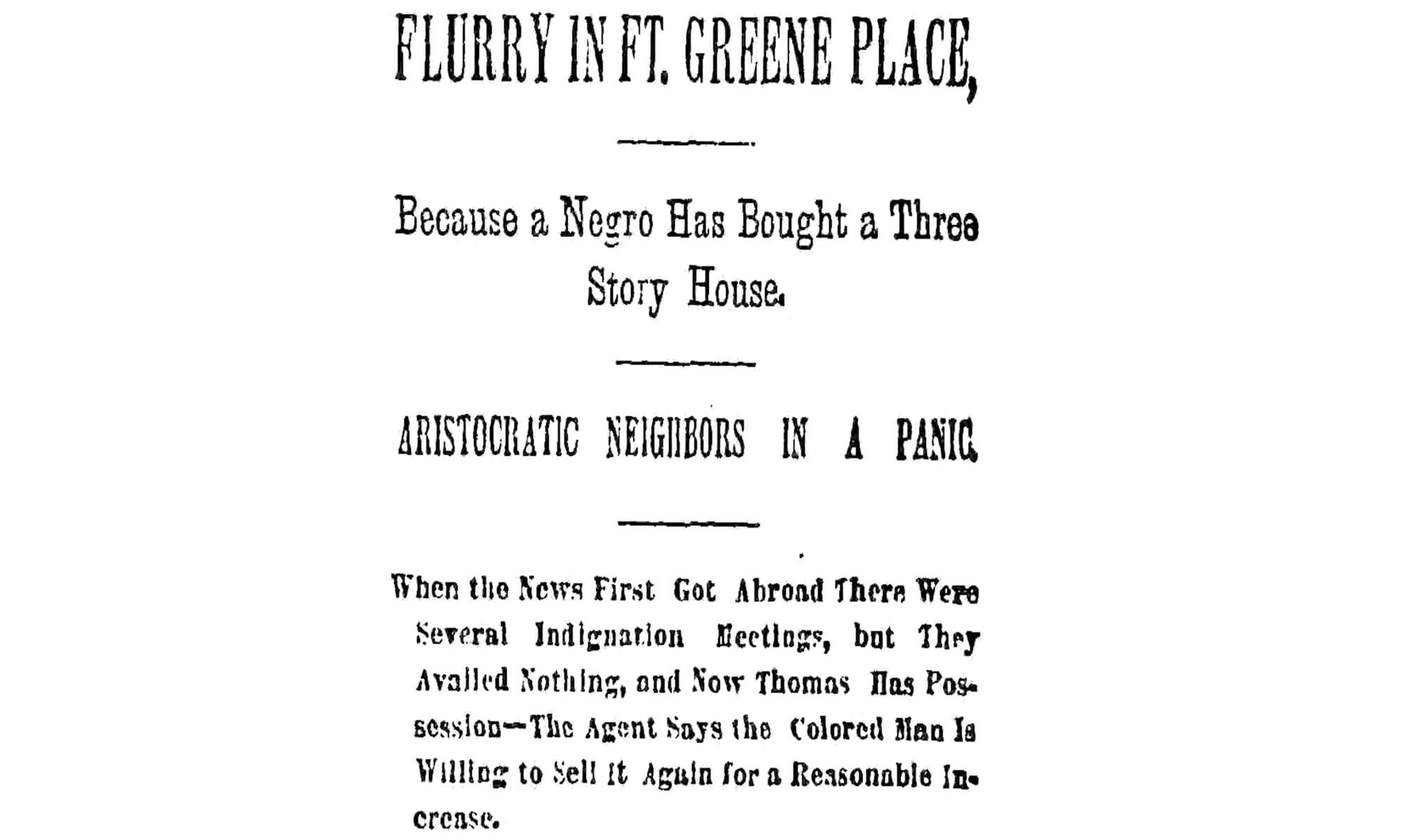
It turns out the general, who was in Saratoga Springs for an extended time to take in the waters, tried to buy Hiram Thomas out, before the ink on his deed was dry, and Thomas said he would sell, but at a much higher price than what he had just bought the house for. That was not well received by the neighbors back on Fort Greene Place. Dr. Onderdock is quoted as saying, “If he [Thomas] is a respectable good man, as they say, he will not wish to live there after this trouble. If he does move in values will all become depreciated and he will lose as much as anyone else.” She also went on to say that if they couldn’t stop Thomas from buying the house, he ought to at least have the decency to not reside at the property.
After the furor died down, many of the other neighbors and parties involved were more reasonable. Thomas J. Henderson, the real estate agent, is quoted by the Eagle as saying that he would not mind living next door to a Negro, in fact, would prefer one as a neighbor to some white people he could name, and that anyway, business was business. Other neighbors also said they had no problem with the sale.
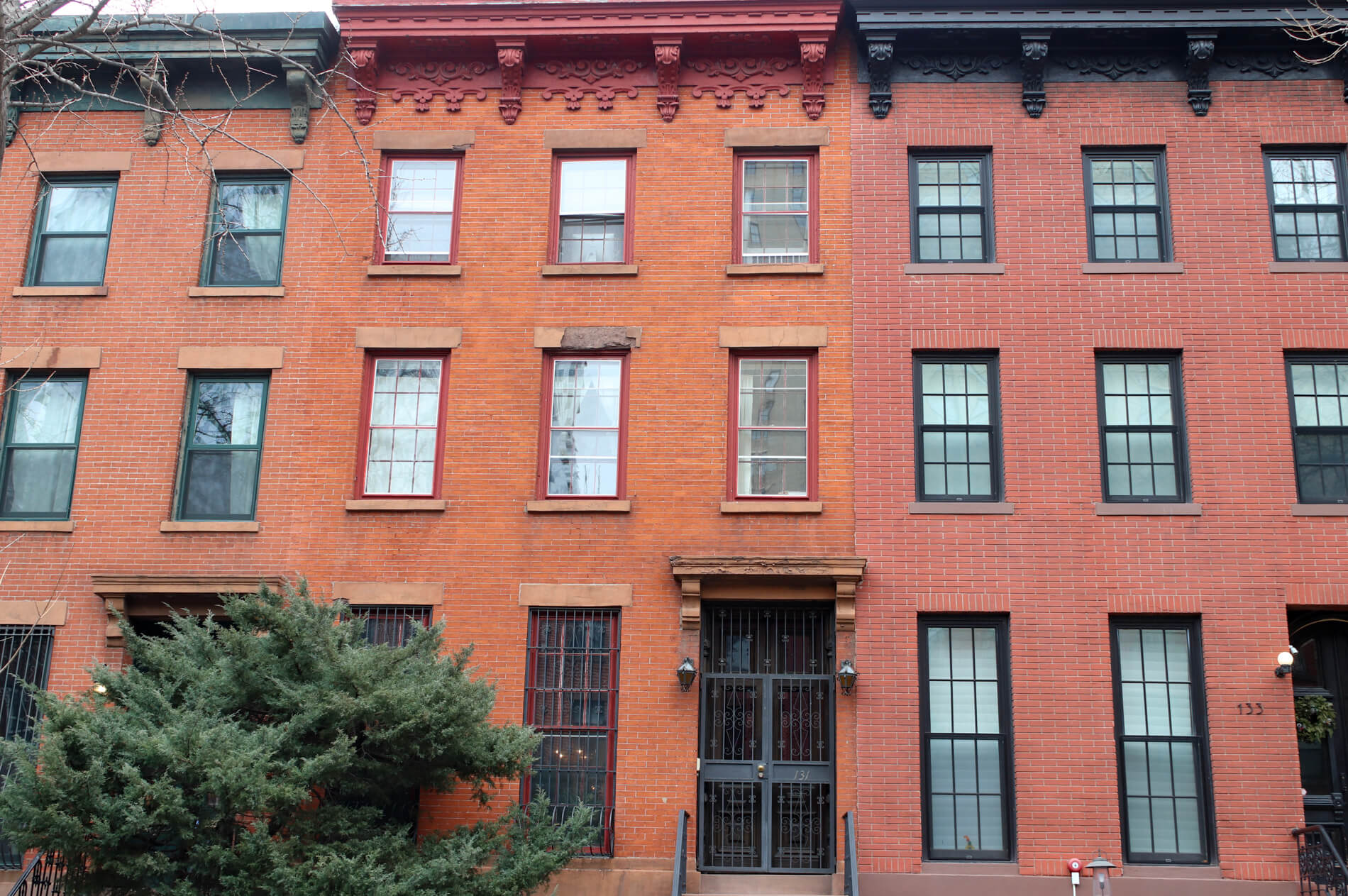
The incident drew the ire of the Rev. S. B. Halliday, assistant pastor of Plymouth Church, who wrote a scathing letter to the New York Times. In part, he said, “I have supposed that the residents of Fort Greene Place were so eminently respectable that they could not have feared that their respectability could ever be called in question by the coming of half a dozen respectable families of color settling around them, much less by a single family. What a pretty story it is to get abroad over the country that a black man cannot move into a respectable neighborhood without stirring up a rebellion….I think our city is disgraced by the presence of such a spirit in its midst.”

Well, what happened? Hiram and Julia Thomas and their children never moved in. Although he told the Times that the family would move in within a month of purchase, they never did, and Thomas sold the house two months later. There was no reason given, and Hiram Thomas would pass away in 1907, a very prosperous and successful man.
The neighbors would disappear from history. J.S. Burnham, General Molineaux’s brother-in-law and one of the loudest opponents to Thomas’ purchase of the home, was the proprietor of a dry-goods firm called Journeay and Burnham. He was also Dr. Onderdock’s tenant. Was his opposition to a black neighbor his own indignation, or was he influenced by his landlady’s vociferous responses? We’ll never know. As for General Edward Molyneaux, who broke the news to Fort Greene Place, he was well known as a Civil War general and member of the Grant staff. Quite an illustrious neighbor for Fort Greene Place. But perhaps the good Dr. Onderdock and others should have been more worried about his family, rather than Hiram Thomas’. For General Molineaux’s son Roland would become one of the most infamous murderers in New York City history.
Incidentally, the house last sold for $1.915 million in 2011. Hiram Thomas should have held out a lot longer.
Related Stories
- The Home of Eubie and Marion Blake at 284-290 Stuyvesant Avenue
- The Inspiring Story of Weeksville, One of America’s First Free Black Communities
- Walkabout: Black Folks in 19th Century Brooklyn
Email tips@brownstoner.com with further comments, questions or tips. Follow Brownstoner on Twitter and Instagram, and like us on Facebook.









What's Your Take? Leave a Comment